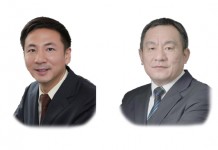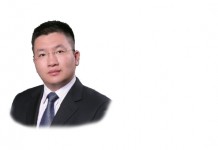China’s Trust Law was implemented on 1 October 2001. In the subsequent 10 years, the China Banking Regulatory Commission (CBRC) issued a series of rules and regulations that have provided a sound legal basis for the acceptance by trust companies of property entrusted by clients, based on the unique system arrangement that is a trust, and the management or disposal of such assets in their own names.

Lawrence Lu
融孚律师事务所
高级合伙人、金融证券部总负责人
Senior Partner, Head of the Financial Securities Practice Group
SG&CO PRC Lawyers
The management of trust property by trust companies remains the most important component of the asset management market. Publicly available data show that, as at the end of 2013, trust assets managed by trust companies totalled RMB12 trillion (US$1.95 trillion), occupying the top spot for the amount of assets managed in the market.
Leading position
The flexibility of asset management by trust companies continues to place it in a leading position; trust property can take the form of debt investments such as trust loans, interbank deposits, reverse repossessions, lease financing, etc., or alternatively take the form of equity investments such as equity investment, securities investment, investment in physical goods and investment in various types of property rights. Furthermore, on financial markets, they may be allocated to standard financial instruments and non-standard financial wealth management products, and on physical property markets, allocated to a great variety of assets.
The Tentative Measures for the Specific Client Asset Management Business of Fund Management Companies were implemented on 1 November 2011. Implementation of the Interim Administrative Provisions for the Subsidiaries of Securities Investment Fund Management Companies began on the same date, fully liberalising the asset management business of fund companies. A fund company may not only establish asset management plans for a single client or multiple clients, and invest in standard financial instruments on financial markets, but it can also establish subsidiaries to run dedicated asset management plans as asset securitisation media. The asset management market was given additional vitality.
In October 2010, the Administrative Measures for the Client Asset Management Business of Securities Companies and the complementary Implementing Rules for the Pooled Asset Management Business of Securities Companies and Implementing Rules for the Targeted Asset Management Business of Securities Companies were published and implemented. And in June 2013, the Administrative Measures for the Client Asset Management Business of Securities Companies and the Implementing Rules for the Targeted Asset Management Business of Securities Companies were amended.

融孚律师事务所
金融证券部、银行与结构
融资业务负责人
Executive director of the Finance & Securities Department and the Banking & Structured Financing Practice
SG&CO PRC Lawyers
Scope expanded
Following the amendments, the asset management plans of securities companies are now governed by the Securities Investment Fund Law, and asset management plans, in terms of China Securities Regulatory Commission (CSRC) regulations, are classified as a trust law relationship. The investment scope and the application method of the pooled asset plans of securities companies have been suitably expanded, but on the whole are restricted to the various standard and non-standard financial products on financial markets. As for the single client targeted asset management business, its investment scope has been completely relaxed, permitting the investor and the securities company to consult on the basis of free will and specify the investment scope in the contract.
On 1 June 2013, the new Securities Investment Fund Law was implemented, with private funds expressly incorporated into the Fund Law’s compliant operation administrative regime. Asset management entered the new “100 flowers contending” era with the following characteristics:
- Diversification of management entities, and size not to be scoffed at. Following the “rectification of names” by the laws and statutes, and by the rules and regulations of the regulators that govern them, and relying on their own respective strengths, financial institutions such as trust companies, commercial banks, securities companies, insurance companies, fund companies, futures companies, etc., are all engaging in asset management business, each with its own emphasis. At the end of 2013, in addition to RMB12 trillion in trust assets managed by trust companies that ranked first in terms of the amount of assets managed, the wealth management assets managed by banks totalled RMB10 trillion, ranking second, and the assets managed by insurance companies totalled RMB8.5 trillion, ranking third. The assets managed by fund companies totalled RMB4.2 trillion, and those managed by securities companies also exceeded RMB4 trillion.
- Among asset management entities there is both mutual competition and the necessary co-operation, producing a situation of “100 flowers blooming” and achieving a win-win result. Where each asset management entity is clearly aware of its own strengths, has accurately pinpointed its market position and designed products that genuinely answer the needs of investors, they mutually learn from each other, draw on each other’s strengths to make up for each other’s weaknesses, and create a win-win co-operative form with a wealth of products, including bank trust products, bank securities products, bank insurance products, trust securities products, trust insurance products, securities fund products, etc. The ecological relationship between asset management entities has changed from one that was originally simple and linear to one that is diversified and mutually overlapping.
To the fore
Driven by the new era, the asset securitisation business in which multiple asset management entities jointly co-operate has again been pushed to the fore as an important asset management form. For example, the application in securities and trust co-operation or securities and fund co-operation of market asset-backed securitisation, which is already mature in the market, to asset securitisation double special purpose vehicle structures, credit asset securitisation special purpose trust structures subject to the approval and oversight of the CBRC and the People’s Bank of China, and asset-backed notes registered and offered by the National Association of Financial Market Institutional Investors have drawn attention from many quarters.
On the other hand, the dedicated asset securitisation business of securities companies that is subject to the approval and oversight of the CSRC is, due to the CSRC’s reorganisation and the temporary halt in the approval of dedicated asset management plans, quietly awaiting next spring as arranged by the regulator.
Lawrence Lu is a senior partner and head of the financial securities practice group, and Huang Ying is the executive director of the finance & securities department and the banking & structured financing practice, at SG & CO PRC Lawyers; Raymond Liu, the senior director of the asset securitisation practice at SG & CO, co-authored this article
中国上海市陆家嘴世纪大道210号
二十一世纪中心大厦15层 邮编:200120
15/F, 21st Century Tower
210 Century Avenue, Shanghai 200120, China
电话 Tel: +86 21 6168 2688
传真 Fax: +86 21 6168 2699
电子信箱 E-mail:
lawrence.lu@sglaw.cn
ying.huang@sglaw.cn
raymond.liu@sglaw.cn
www.sglaw.cn






















